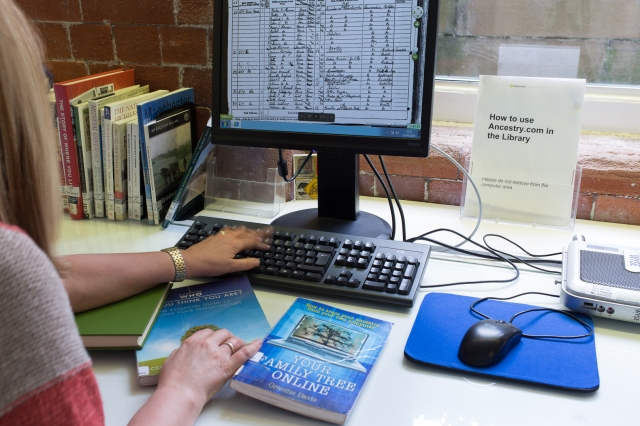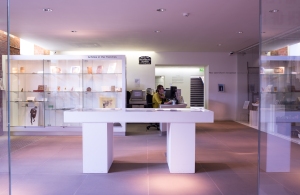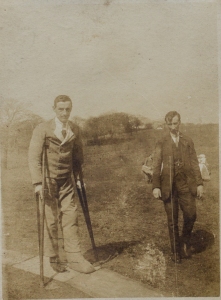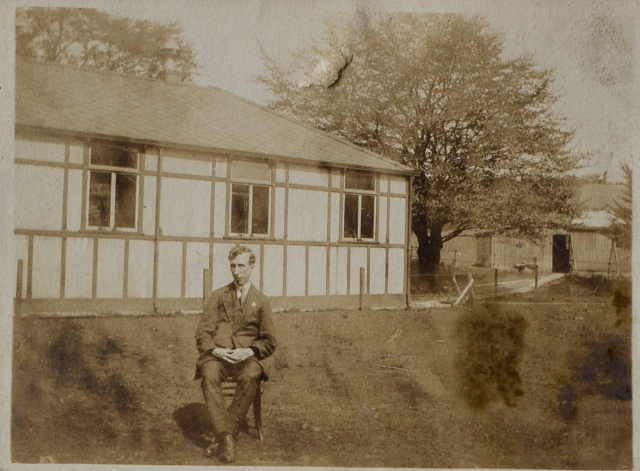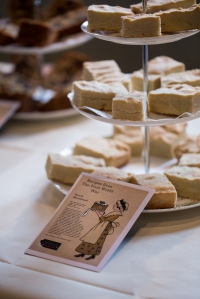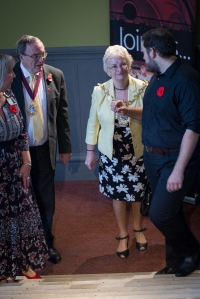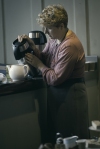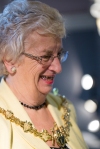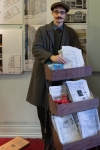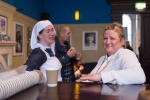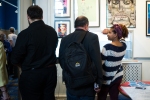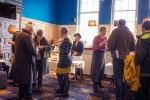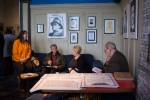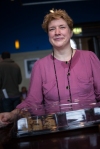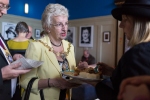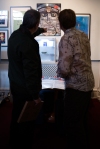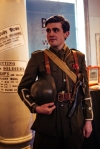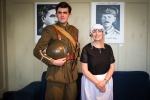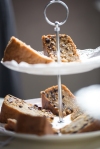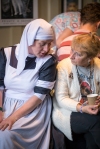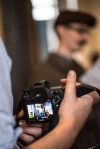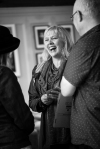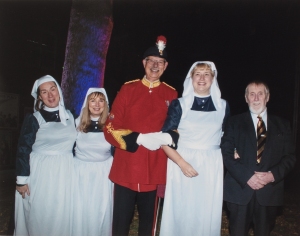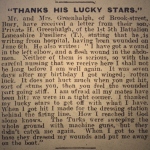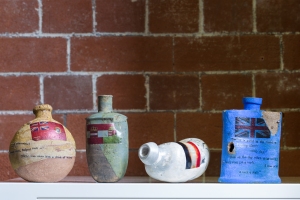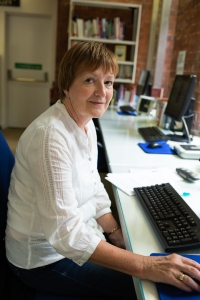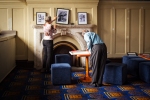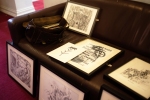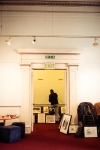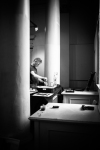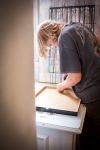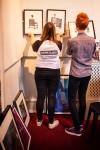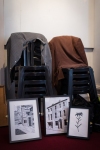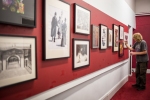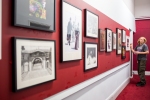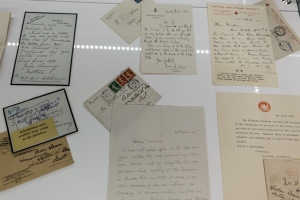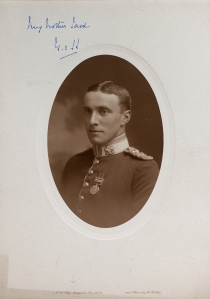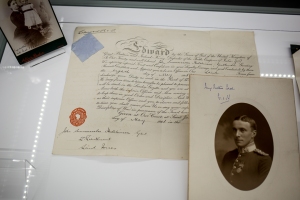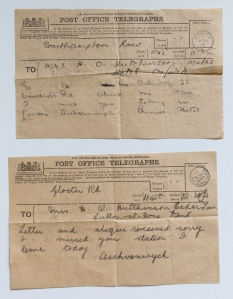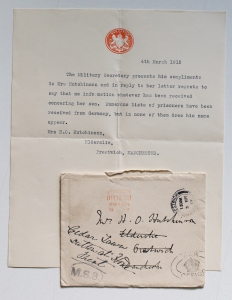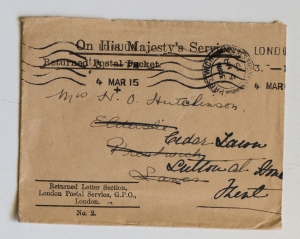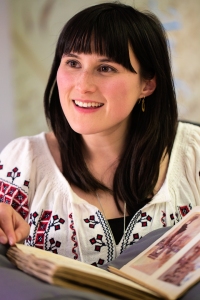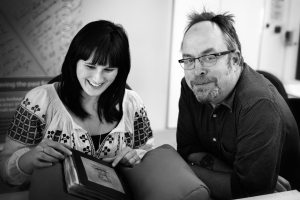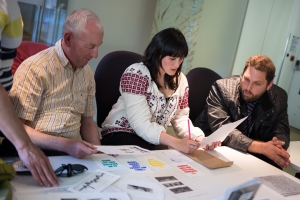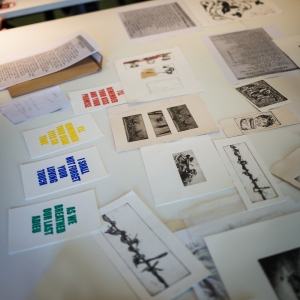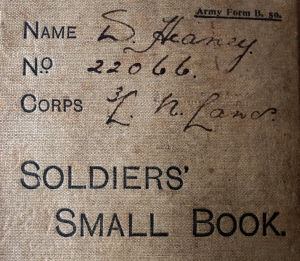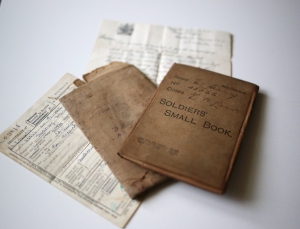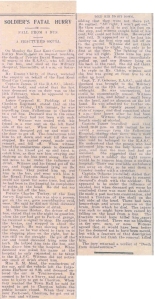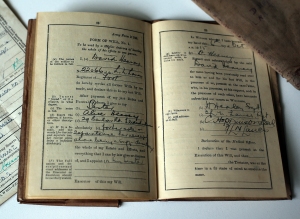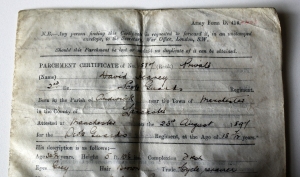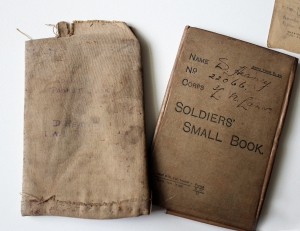Back in October last year we were contacted by Mr. Bernard Kaye who requested information on how to donate documents and photographs relating to his grandfather, Rifleman Edmund Kaye (from Radcliffe) who was killed in action during World War One. We informed Bernard that we would be delighted to accept the documents into our archives and in return would digitise them and provide the family with a copy of the originals.
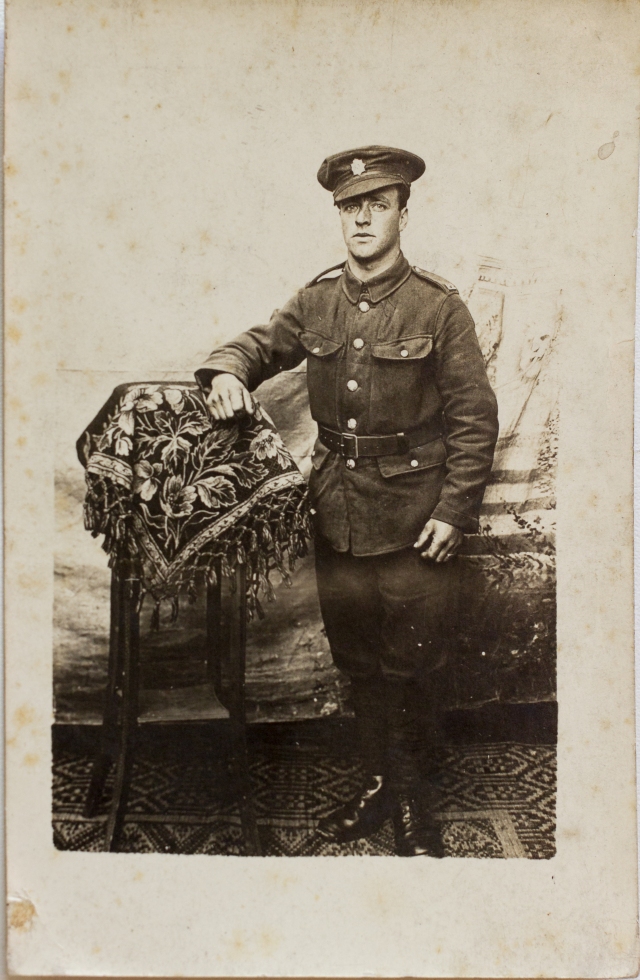
Rifleman Edmund Kaye
The collection includes Army Forms, correspondence from the War Graves Commission, photographs and letters sent from Edmund to his young daughter, Hilda and his wife, Mary Ann.

Army Form reporting Edmund’s death on 30th November 1917
The letter sent to his little girl, although short, is particularly poignant: Edmund begins his letter, “I thank you love for your card and glad you think of Daddy” and signs off with a heartfelt request for Hilda not to forget her prayers, “With Fondest Love, Your Daddy”. Equally poignant is a collection of photographs taken from a visit to Edmund’s grave by his then 14 year old great-grandson – Stephen Kaye – while on a school trip with Bury Grammar School in October 2000 to visit the battlefields of Dunkirk and Ypres.
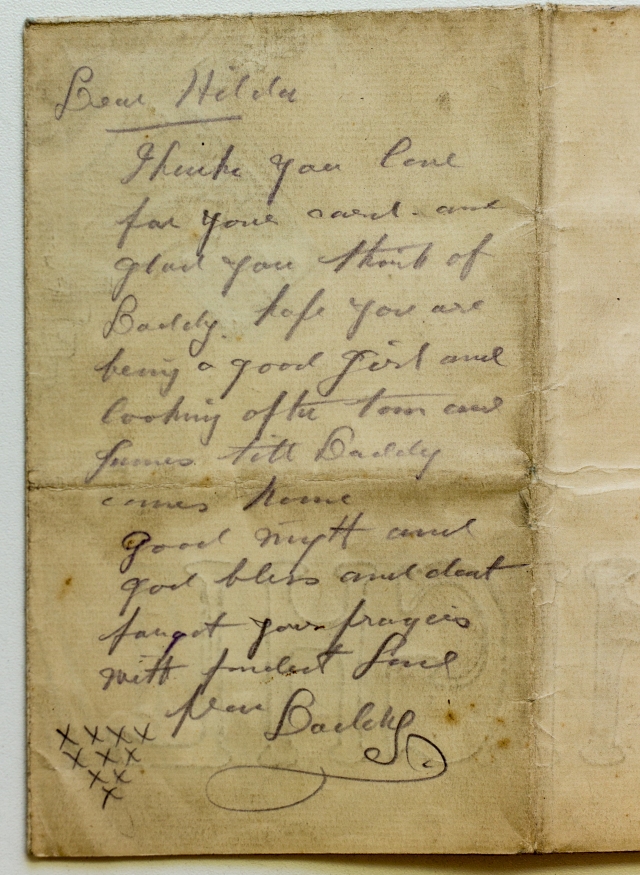
Letter from Edmund sent to his daughter, Hilda
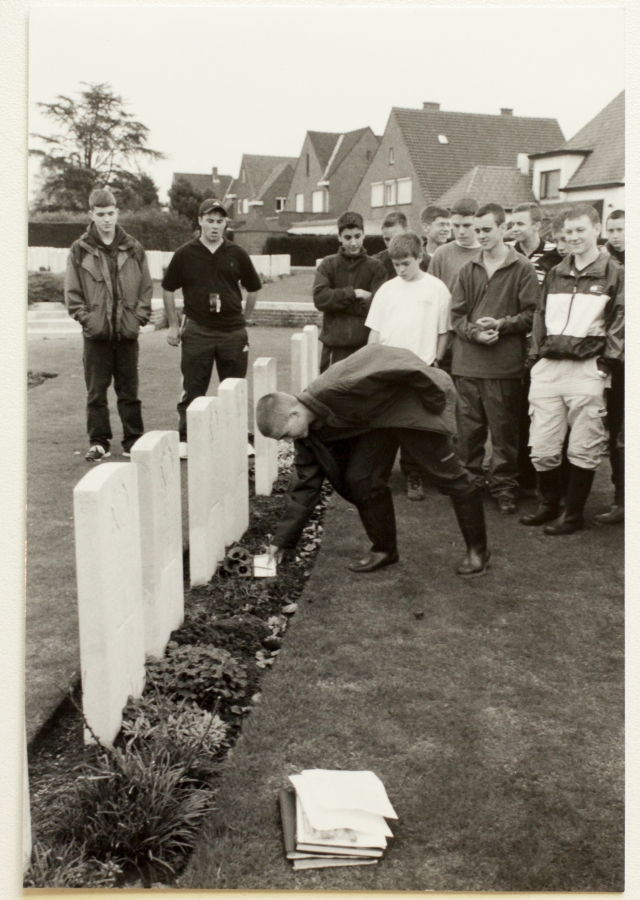
Edmund’s great-grandson Stephen Kaye places tribute on Edmund’s grave
We were so moved by the images of Stephen at his great-grandfather’s grave that we asked if he might share his experience and this is what he wrote:
“Before visiting White House Cemetery in St. Jan, the idea that I had a great-grandfather who died in the First World War was an abstract one. He was the man with whom I shared the slightly embarrassing middle name that I tried to hide from my friends. I had read his letters, of course, but in my mind I still think I pictured him as somebody who lived to a grand old age and retired to enjoy Sunday dinners with his family, as my grandparents did. Visiting the cemetery, however, changed all that for me. Seeing his simple grave, surrounded by 1,000 people just like him, suddenly brought home the cruel way his life was curtailed. As I write this now, having already outlived Edmund with hopefully more than two-thirds of my life still to enjoy, I can only feel both pride and sadness at the sacrifice he made for his country. I will never understand how he truly felt about the War or its merits, but I know that his bravery in a time of horror helped make it possible for me to live the life of possibilities and relative security that many others in this country also enjoy. Visiting his grave helped me understand the huge costs of war, and made me proud to carry the name of my great-grandfather into the twenty-first century.”

The photographs, along with Stephen’s account of his visit to France, remind us that the people who lost their lives in The Great War are not forgotten, and through these monuments and the preservation of surviving records in Archives around the world will be remembered by generations to come.

Wendy





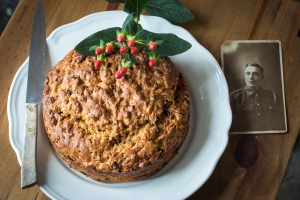

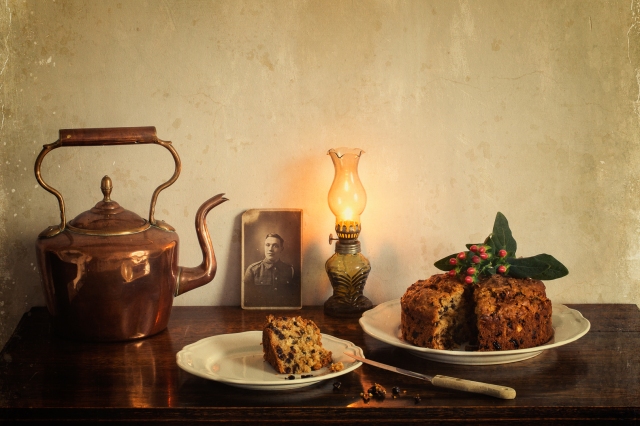 Notes on recipe: Miss Kitchener advises 2 hours in a moderate oven. I baked my cake in an electric fan oven at 140 C for 1 hour 30 minutes to achieve the results pictured above.
Notes on recipe: Miss Kitchener advises 2 hours in a moderate oven. I baked my cake in an electric fan oven at 140 C for 1 hour 30 minutes to achieve the results pictured above.